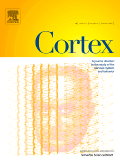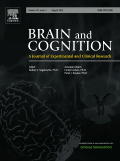
CORTEX
Scope & Guideline
Advancing Understanding of the Brain and Behavior
Introduction
Aims and Scopes
- Neural Mechanisms and Connectivity:
The journal emphasizes the exploration of neural mechanisms underlying cognitive processes, aiming to elucidate how various brain regions interact and communicate during different tasks. - Cortical Structure and Function:
Research published in CORTEX frequently investigates cortical morphology, including thickness and gyrification, and its relation to functional outcomes, particularly in clinical populations. - Neurodevelopment and Plasticity:
A significant focus is placed on developmental neuroscience, examining how brain structure and connectivity evolve throughout different life stages and the impact of experiences on neuroplasticity. - Clinical Neuroscience and Pathology:
CORTEX publishes studies addressing neurological and psychiatric disorders, utilizing neuroimaging and electrophysiological techniques to understand the underlying pathophysiology. - Translational Neuroscience:
The journal encourages research that bridges basic neuroscience findings with clinical applications, particularly in understanding and treating neurodevelopmental and neurodegenerative disorders.
Trending and Emerging
- Multimodal Imaging Techniques:
Recent studies have increasingly employed multimodal imaging approaches, integrating fMRI, EEG, and PET to provide a comprehensive view of brain function and connectivity. - Neurodevelopmental and Aging Studies:
There is a growing trend towards research focusing on neurodevelopmental processes and aging, exploring how neural structures and functions change across the lifespan. - Machine Learning and Computational Neuroscience:
The integration of machine learning techniques for analyzing neural data and predicting cognitive outcomes is becoming more prominent, reflecting a shift towards data-driven neuroscience. - Neuroinflammation and Neurodegeneration:
Emerging research on the role of neuroinflammation in neurodegenerative diseases is gaining traction, linking immune responses to cognitive decline and brain health. - Social Neuroscience:
Studies exploring the neural underpinnings of social behaviors and interactions are increasingly featured, highlighting the importance of social context in understanding brain function.
Declining or Waning
- Basic Sensory Processing:
Historically, there was a strong emphasis on basic sensory processing studies. However, recent publications have shifted towards higher-order cognitive functions, indicating a waning interest in purely sensory-level investigations. - Traditional Neuropsychological Assessments:
The journal has seen a decline in papers focusing on traditional neuropsychological assessments, as newer methodologies and technologies, such as neuroimaging and machine learning, gain prominence. - Animal Models in Basic Research:
There is a noticeable decrease in studies relying solely on animal models for understanding basic brain functions, as the field moves towards more integrative approaches using human data. - Single Modal Imaging Studies:
The publication of studies utilizing single-modal imaging techniques has diminished, with a growing preference for multimodal approaches that combine various imaging modalities for richer insights.
Similar Journals

BRAIN AND COGNITION
Illuminating the Pathways of ThoughtBRAIN AND COGNITION, published by Academic Press Inc Elsevier Science, stands as a vital resource for researchers and practitioners in the realms of cognitive neuroscience and psychology. Established in 1982, the journal has continuously evolved, showcasing cutting-edge research that bridges the understanding of brain functions and cognitive processes up to 2024. With an impressive impact factor reflecting its commitment to high-quality scholarship, the journal currently holds a prestigious Q1 ranking in Arts and Humanities (miscellaneous) and notable Q2 rankings in various psychology fields, including Cognitive Neuroscience, Developmental and Educational Psychology, Experimental and Cognitive Psychology, and Neuropsychology. This multidisciplinary journal cultivates a rich academic dialogue, offering valuable insights to professionals, researchers, and students alike. Although it does not offer open access, its robust indexing in Scopus and consistent contribution to important discussions in cognitive research define its critical role in advancing knowledge and innovation in the cognitive sciences.

PROGRESS IN NEUROBIOLOGY
Catalyzing Progress in Understanding the BrainPROGRESS IN NEUROBIOLOGY is a prestigious journal dedicated to advancing the field of neuroscience, published by Pergamon-Elsevier Science Ltd. With an impressive impact factor, it stands as a critical resource for researchers, professionals, and students alike, featuring rigorous peer-reviewed articles that explore the latest developments in neurobiology. The journal has established itself as a leading publication, ranked in the Q1 category for Neuroscience (miscellaneous) and holding a notable 13/113 rank in General Neuroscience per Scopus metrics, placing it in the top 12% of its field. Since its inception in 1959, PROGRESS IN NEUROBIOLOGY has covered a wide array of topics, from molecular mechanisms to cognitive processes, fostering a comprehensive understanding of brain functions. While the journal is not open access, it ensures accessibility to profound knowledge through institutional subscriptions. Researchers and scholars will find critical analyses and innovative research that are pivotal for both foundational knowledge and cutting-edge investigations in the neuroscience realm.

Brain and Behavior
Connecting Minds: Where Neuroscience Meets Behavior.Brain and Behavior is a premier open-access journal published by WILEY, dedicated to advancing the field of Behavioral Neuroscience. With its ISSN 2162-3279, the journal has established itself as a vital resource for researchers, professionals, and students alike, fostering the dissemination of cutting-edge research since its inception in 2011. Renowned for its rigorous peer-review process, it enjoys a commendable Q2 ranking within the field, reflecting its impactful contributions and relevance in the scientific community. The journal not only emphasizes innovative studies that bridge behavioral science and neuroscience but also serves as a platform for diverse methodologies and interdisciplinary approaches. Accessible [open access](https://onlinelibrary.wiley.com/journal/21623279), Brain and Behavior invites submissions that explore the neural mechanisms underlying behavior, aiming to engage a global audience eager to expand the boundaries of knowledge in this dynamic field. Positioned in the heart of the United States, at 111 River St, Hoboken, NJ, it is strategically placed to collaborate with leading institutions and researchers worldwide.

NEUROSCIENCE RESEARCH
Championing High-Quality Neuroscience ResearchNEUROSCIENCE RESEARCH, published by Elsevier Ireland Ltd, is a leading journal in the field of neuroscience, with a notable reputation for disseminating high-quality research that spans a variety of topics within the discipline. With an ISSN of 0168-0102 and an E-ISSN of 1872-8111, this journal serves as a vital platform for both established researchers and emerging voices in the field. Ranking in the Q2 quartile in both Medicine and Neuroscience categories, it has been recognized as a reliable source of innovative findings since its inception in 1984, with continuous publication through 2024. Although it does not currently offer Open Access options, the journal is indexed in Scopus, holding a significant position at Rank #48/113 in General Neuroscience, reflecting its contribution to advancing the understanding of neural mechanisms across various contexts. With its address anchored in Ireland, NEUROSCIENCE RESEARCH plays an essential role in bridging scientific inquiry and practical applications, making it an indispensable resource for researchers, professionals, and students dedicated to the burgeoning field of neuroscience.

Frontiers in Systems Neuroscience
Connecting minds through groundbreaking research.Frontiers in Systems Neuroscience is a premier open-access journal published by FRONTIERS MEDIA SA, dedicated to advancing the understanding of the complex systems that underpin neural function and behavior. Established in 2007 and based in Switzerland, this journal has gained recognition for its rigorous peer-reviewed articles that contribute significantly to the fields of Cellular and Molecular Neuroscience, Cognitive Neuroscience, and Developmental Neuroscience. As of 2023, it proudly holds a Q2 ranking in several neuroscience categories, reflecting its high impact and relevance in the academic community. The journal is accessible to researchers, professionals, and students worldwide, providing a platform for innovative research while promoting collaborative scientific dialogue. With a commitment to open access, Frontiers in Systems Neuroscience ensures that groundbreaking findings are readily available to enhance knowledge sharing across the globe. This makes it an essential resource for anyone looking to stay at the forefront of neuroscience research.

Brain Connectivity
Decoding the Complex Web of Neural Connections.Brain Connectivity is a premier journal dedicated to advancing the understanding of neural connections and brain function through innovative research and interdisciplinary collaboration. Published by MARY ANN LIEBERT, INC, this journal has established itself in the field of neuroscience, earning a respectable Q2 ranking in the 2023 category of Neuroscience (Miscellaneous) and a Scopus rank of 61 out of 113 in General Neuroscience. Since its inception in 2011, Brain Connectivity has been at the forefront of research on the intricate web of brain networks, exploring topics such as functional connectivity, neuroimaging, and the implications of connectivity studies for understanding various neurological disorders. Researchers, professionals, and students benefit from comprehensive access to cutting-edge studies and critical reviews, fostering a deeper appreciation of brain dynamics. As the field evolves, Brain Connectivity remains a vital resource for those aiming to contribute to our growing understanding of brain architecture and function.

CEREBRAL CORTEX
Elevating the discourse in neuroscience research.CEREBRAL CORTEX, published by Oxford University Press Inc, is a premier journal dedicated to advancing the field of neuroscience, specifically focusing on the cellular, molecular, and cognitive aspects of cortical structure and function. With an impressive impact factor that situates it in the top quartile (Q1) of its categories for 2023, this journal holds significant relevance for researchers and professionals interested in the latest discoveries and methodologies in both Cognitive Neuroscience (ranked #31 out of 115) and Cellular and Molecular Neuroscience (ranked #48 out of 97). Operating without an open access model, it ensures rigorous peer review and dissemination of high-quality research from across the globe. Since its inception in 1991, CEREBRAL CORTEX has established itself as a critical platform for educators and inventors, pushing the boundaries of knowledge in understanding brain function and its implications for behavior. Researchers and students alike will find this journal an invaluable resource for both foundational and cutting-edge studies in neuroscience.

Brain Imaging and Behavior
Mapping Minds: Cutting-edge Research in Imaging and BehaviorBrain Imaging and Behavior is a premier journal published by SPRINGER, dedicated to advancing the understanding of the relationship between brain function and behavior through innovative imaging techniques. Since its inception in 2007, the journal has provided a crucial platform for researchers and professionals in fields such as Behavioral Neuroscience, Cognitive Neuroscience, and Psychiatry and Mental Health. With an impressive ranking within the Q1 category in Radiology, Nuclear Medicine and Imaging and maintaining strong Q2 status in several other categories, the journal is positioned as a leading resource for groundbreaking research. The journal aims to disseminate high-quality studies that explore neurobiological underpinnings of behavior, utilizing cutting-edge imaging technologies. Although it is not an open-access journal, the visibility and impact of published works in Brain Imaging and Behavior continue to influence the scientific community significantly, underscoring the critical intersection between imaging science and neuroscience.

Frontiers in Neuroscience
Innovating research for a deeper cognitive insight.Frontiers in Neuroscience, published by FRONTIERS MEDIA SA, is a premier open-access journal dedicated to advancing our understanding of the nervous system through innovative and rigorous research. Since its inception in 2007, this journal has become an influential platform for researchers, featuring a diverse range of topics across various subfields of neuroscience. With its current ranking in the second quartile (Q2) of the category "Neuroscience (miscellaneous)" and a commendable position of #40 out of 113 in general neuroscience according to Scopus, Frontiers in Neuroscience is recognized for its high-impact contributions. The journal promotes free access to scholarly work, ensuring that cutting-edge neuroscience studies reach a global audience and foster collaboration across disciplines. By bridging gaps in knowledge and facilitating the exchange of ideas, Frontiers in Neuroscience plays a pivotal role in addressing the complexities of the nervous system and its effects on behavior, cognition, and health.

Biological Psychiatry-Cognitive Neuroscience and Neuroimaging
Bridging Biological Psychiatry and Cognitive NeuroscienceBiological Psychiatry-Cognitive Neuroscience and Neuroimaging is a leading interdisciplinary journal published by Elsevier, focusing on the convergence of biological psychiatry, cognitive neuroscience, and advanced neuroimaging techniques. With its prestigious Q1 rankings across essential categories such as Biological Psychiatry, Cognitive Neuroscience, and Neurology (clinical), this journal is at the forefront of research that examines the complexities of mental health through innovative methodologies. Covering a broad spectrum of topics from neurobiological mechanisms to clinical applications, it aims to provide a platform for scholars and practitioners to exchange insights on mental disorders and their neurobiological underpinnings. The impact factor and Scopus rankings further underscore its importance, with rankings highlighting its position in the top percentiles of related disciplines. By fostering an open exchange of ideas and promoting cutting-edge research, this journal is an essential resource for researchers, professionals, and students dedicated to advancements in the understanding and treatment of psychiatric and neurological conditions.